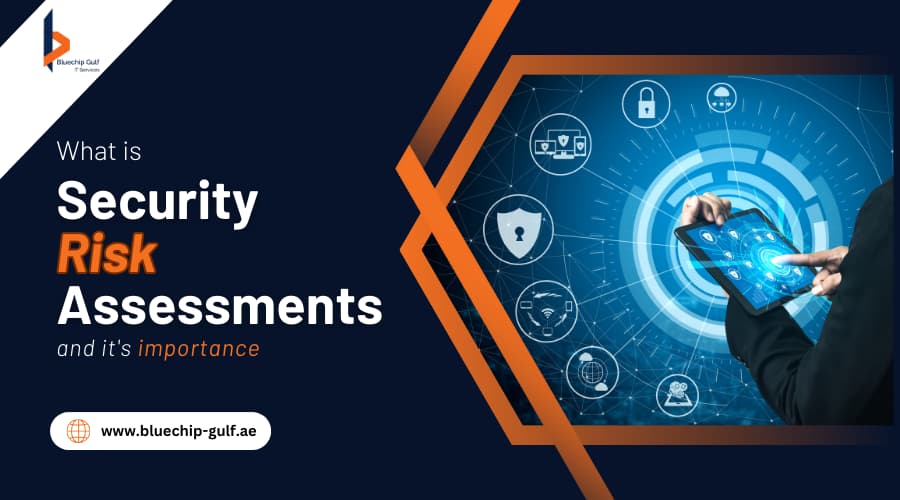
Security must remain a paramount concern across diverse business domains. Continual assessment of security risks is crucial, involving the ongoing identification of potential vulnerabilities that malicious actors might exploit to gain unauthorized entry into systems and data. This assessment encompasses a thorough examination of an organization’s infrastructure, scrutinizing servers and procedures, and analyzing networks, applications, and information security protocols. Furthermore, it entails an evaluation of corporate policies and extends to appraising third-party security measures.
Embedded within your business operations, technologies, and processes lie inherent security vulnerabilities that necessitate acknowledgment and mitigation. It is incumbent upon your role to ensure these risks are comprehensively comprehended and systematically integrated into your business’s functioning. In certain instances, there might exist legal obligations mandating the formal evaluation of these security risks. Consequently, adherence to specific standards becomes imperative to minimize these risks effectively.
Main Types of Security Risk Assessments
Security risk assessments encompass a variety of methodologies tailored to different aspects of a business’s operations.
- Internal Risk Assessment – This assessment delves into the vulnerabilities and potential threats within an organization’s internal processes, systems, and infrastructure. It focuses on identifying weaknesses that could be manipulated by insiders or attackers who have gained some level of access to the company’s network.
- External Risk Assessment – This type of assessment scrutinizes the vulnerabilities that external actors could exploit to breach an organization’s security defenses. It concerns assessing the security standards in place to protect against attacks originating from the outside, such as hackers attempting to infiltrate the network.
- Application Security Assessment – Specifically targeting software applications, this assessment aims to uncover vulnerabilities within the code and design of applications. It examines how well applications resist unauthorized entry, data violations, and other security violations.
- Physical Security Assessment – This assessment focuses on the physical aspects of security, including access controls, surveillance systems, and the overall security of the premises. It seeks to identify weaknesses in physical security measures that could lead to unauthorized access or breaches.
- Compliance and Regulatory Assessment – In industries with particular regulations and adherence criteria, this assessment ensures that an organization adheres to these requirements. It involves evaluating whether security measures are aligned with industry-specific guidelines and legal mandates.
Importance of Security Risk Assessments
Security risk assessments play a pivotal role in safeguarding organizations against an increasingly diverse and sophisticated array of threats. Here’s a thorough investigation of the significance of security risk assessments –
- Identifying Vulnerabilities and Threats
Security risk assessments are instrumental in identifying vulnerabilities within an organization’s systems, processes, and infrastructure. By systematically analyzing these vulnerabilities, businesses can proactively address defects prior to they are abused by unscrupulous actors. This approach prevents potential security breaches and data violations that could cause substantial financial and reputational harm.
- Quantifying Risks
Through thorough risk assessments, organizations can quantify the potential impact and likelihood of various risks. This quantification provides valuable insights into which risks pose the greatest threat and helps prioritize security measures accordingly. This data-driven process guarantees that resources are distributed effectively to areas of highest vulnerability.
- Strategic Decision-Making
Security risk assessments deliver a solid basis for strategic decision-making. Associations can create a complete interpretation of their risk landscape, allowing them to make informed choices about cybersecurity investments, policies, and protocols. This strategic alignment ensures that security measures are aligned with the company’s purposes and objectives.
- Compliance and Regulatory Requirements
Multiple industries are subject to strict regulatory prerequisites regarding data protection, privacy, and security. Security risk assessments enable organizations to assure adherence to these regulations. By identifying gaps in security measures, businesses can implement necessary changes to meet regulatory standards, avoiding potential legal penalties and reputational damage.
- Mitigating Financial Loss
The aftermath of a security breach can lead to substantial financial losses, including costs associated with data recovery, legal actions, and potential lawsuits. Security risk assessments aid in minimizing such losses by fortifying defenses and preventing security breaches from occurring in the first place.
- Preserving Reputation
A single safety violation can hardly harm an organization’s standing and erode customer trust. By conducting regular security risk assessments, companies can show their dedication to data security and cybersecurity. Proactive risk management enhances customer confidence and preserves the organization’s standing as a responsible commodity.
- Enhancing Incident Response Preparedness
Security risk assessments contribute to the development of robust incident response plans. In the event of a security breach, an organization with a well-defined incident response strategy can swiftly contain and mitigate the impact, reducing downtime and minimizing damage.
- Adapting to Emerging Threats
The danger landscape is consistently growing, with new attack vectors and tactics appearing regularly. Security risk assessments enable organizations to stay ahead of these evolving threats by continuously evaluating and adapting their security measures to counter emerging vulnerabilities.
Steps in Security Risk Assessments
- Scope Definition – Begin by clearly explaining the range of the assessment. Determine the systems, processes, networks, and assets that will be evaluated. This helps establish the boundaries and focus of the assessment.
- Asset Identification – Identify all critical assets, including physical equipment, software applications, databases, intellectual property, and sensitive data. Understanding what needs protection is essential for targeting security efforts effectively.
- Threat Identification – Identify potential threats that could compromise the safety of your investments. These hazards can contain outer elements such as hackers, malware, and natural disasters, as well as internal threats such as insider attacks or human errors.
- Vulnerability Assessment – Identify vulnerabilities within your systems, processes, and infrastructure that could be exploited by threats. This involves analyzing weak points in hardware, software, configurations, and security controls.
- Risk Analysis – Assess the chance and possible effect of each specified threat exploiting the vulnerabilities. Evaluate how a successful attack could affect the confidentiality, goodness, and obtainability of your assets.
- Risk Evaluation – Prioritize risks based on their severity, potential impact, and likelihood. This step helps you focus your resources on handling the most crucial troubles first.
- Mitigation Planning – Develop a strategy to reduce identified hazards. This plan could involve implementing technical controls (firewalls, encryption), operational controls (access restrictions, monitoring), or procedural controls (policies, employee training).
- Implementation – Put the mitigation plan into action. Implement the recommended security measures and controls to reduce the identified vulnerabilities and mitigate the associated risks.
- Testing and Validation – Test the effectiveness of the implemented controls. Conduct vulnerability scans, penetration testing, and other assessments to assure that the safety standards are performing as intended.
- Documentation – Maintain thorough documentation of the entire risk assessment process. This documentation should include the identified threats, vulnerabilities, risk analysis, mitigation strategies, and testing results.
- Regular Review and Update – Security risks are dynamic, and new threats and vulnerabilities can emerge. Daily review and update your hazard review to assure it stays correct and relevant to the evolving threat landscape.
- Communication and Training – Share the results of the risk assessment with relevant stakeholders, including management, employees, and third-party vendors. Provide training on security protocols, best practices, and incident response procedures.
Continuous Monitoring – Security risk assessment is an ongoing process. Execute constant supervision to notice and react to new hazards and vulnerabilities as they arise.
Also Read: THE COMPLETE GUIDE TO VPN NETWORKS MONITORING: WHY IT MATTERS

